You are here
Mausoleum Of Ulugbek.
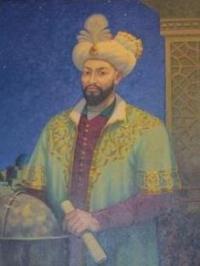
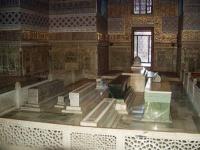
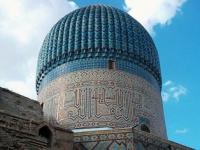
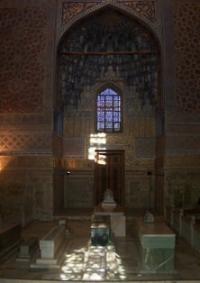
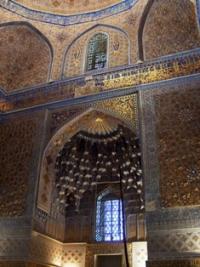
Recommended excursion tours over Uzbekistan.
“The universe contains many planets which make it what it is – a unified system. In addition, our bodies contain many organs, and each part is congruent to a planet in our solar system. The universe we see out our eyes is a mirror of what is within us. This is what God meant by making man in his image. We are all made as a reflection of God and that reflection of him is within us. Furthermore, not only are all religions connected to the same Truth, or Cosmic Heart, but this concept is also mirrored in the pantheons of ancient religions, where each of the many gods simply represented one set of characteristics of the ONE. And in all cases, these many gods symbolized the planets, therefore mimicking the different parts of the universe and the ONE God’s many mirrors (He Who is All). The structure behind all polytheistic religions of the past and present is one and the same. They are all built on the same foundation as Nature”
Suzy Kassem.
Foreign Independent Tour in Samarkand.
Ulugbek was born in 1394, during the military campaign of Temur. in the city of Sultaniya, located in the West of Iran. He was the eldest son of Mirza Shahruh and his name is Muhammad Taragai but since childhood he began to call Ulugbek, and this name stuck forever.
Childhood Ulugbek took place during the military campaigns of Timur. After Timur's death in 1405 during the campaign in China two years continued the struggle for the throne between his successors, and it won youngest son Shahruh.
But Shohruh the capital of the state chose Herat, the capital of Maveranahra chose Samarkand were given to his son Ulugbek. Shohruh considered to be a single ruler of Iran and Turan. In 1411 Shahrukh appointed Ulugbek, the Hakim of Maveranahra and Turkestan.
Became a Hakim at the age of 17, he, unlike his grandfather, was not interested in military campaigns, and had a knack for science. In childhood, Ulugbek was brought up by her grandmother Sarai Mulk Khanum.
Maybe she taught beloved grandson the alphabet and reading and gave primary education. In 1405 - 1411, amir Shokh Malik was Atabegi (teacher) of Ulugbek, he probably taught it, and military science, the art of politics (A. Akhmedov.1996). We can assume that one of the teachers of Ulugbek was Mawlana Ahmad is the largest scientist in the Palace of Temur. The originator of the graph the position of the stars for the next 200 years.
However, later Ulugbek in his main work "Zij" called the teacher Qazizada Rumi. Indeed, Qazizada Rumi was born in 1360 and in 20 - 25 years age, even before the birth of Ulugbek, were already in the service of Timur.
Ulugbek grew up under the influence of Mawlana Ahmad and Kazyzade Rumi, and from his childhood he developed a passion for astronomy and mathematics, the exact sciences. Ulugbek to his two decades emerged as a great scholar of his time.
During his reign, his academic achievements were of great importance in the history of the culture of the middle ages. Development of science and prosperity of the state Ulugbek decided to open new type of schools and madrasahs and to build simultaneously three madrasahs - in Samarkand, Bukhara and Gijduvan.
Soon Ulugbek, assembled in madrassas Mudarisov and scientists, thus the formation of its school of astronomy. The main mudarrisi of this school were Taftazani, Mawlana Ahmad and Kazyzade Rumi, who even in the times of Temur in search of conditions for scientific work came to Samarkand.
In 1417 the number of invitees to Samarkand scholars from Transoxiana and Khorasan exceeded 100 people. Among them were writers, historians, calligraphers, artists, architects. Astronomers and mathematicians were the most honorable, the most authoritative among them was Kazizada and Cauchy.
In 1420 took place the solemn opening of the madrasa in Samarkand. Founded by Ulugbek scientific society and the madrassas of Samarkand had a great influence on the culture of many peoples of the world, in this school I formed many great scientists of the East.
The first astronomical works in Islam called "Zij" and they consisted mainly of tables. To the work of Ulugbek the best of them were "Qanooni, Masudi" Beruni "Zije el hon" and written by Nasridin Tusi in 1256 and donated to Hulashhan.
Created in the early fifteenth century "Ziji hakani" Jamshid Koshi devoted to the Shahruh, was written on the basis of Chinese and Mongolian traditions and therefore had little of scientific importance for the Islamic countries.
For this reason, Ulugbek took up the development of astronomical studies, for which it was necessary to build the Observatory. Abu Tohira wrote: "four years after the justification of the madrasah of Mirzo Ulugbek, after consulting with Kazyzade Rumi, Mawlana Giesiddin jamshidom and Mawlana Moinuddin Koshoni, undertook the construction on Kuhan hill, near the river Obi Rahmat building Observatory.
Around her high pitch hujras".
The construction of the Observatory lasted from 1424 through 1429. With the completion of the started astronomical observations. Joint activities of the Observatory and madrasah gave the opportunity to raise astronomy and mathematics in the scientific school of Ulugbek to the highest degrees of science of the middle ages.
Employment public Affairs, travel, observations in the Observatory and classes in the madrassas, in addition, the General management of scientific works left to Ulugbek time writing your own papers.
In this regard, there are only four. The main and most popular scientific work of Ulugh beg "Zij".
In addition, he wrote a work on mathematics "Treatise on determining sine of one degree", the astronomical treatise "Risalei Ulugbek" (the only instance is stored in India, in the library Oligarchische University) and the work on the history of" Tarikhi arba ulus" (the Story of four uluses).
Authority:
«Religious and spiritual monuments of the Central Asia». The author of M. Khashimov. Publishing house "Saga", 2001. The collection «Architectural and archeologic monuments of Uzbekistan», "Saga:, 2003. «Samarkand. The directory-guidebook Authors I.Umnyakov, Yu.Alekserov. Arapov A.V. Samarkand "Masterpieces of the Central Asia". Publishing house «Mass-media-ASIA San’at» 2008. Arapov A.V. «Samarkand. The guidebook "Publishing house mass-media-ASIA San’at» 2007.
Photos
Alexander Petrov.







